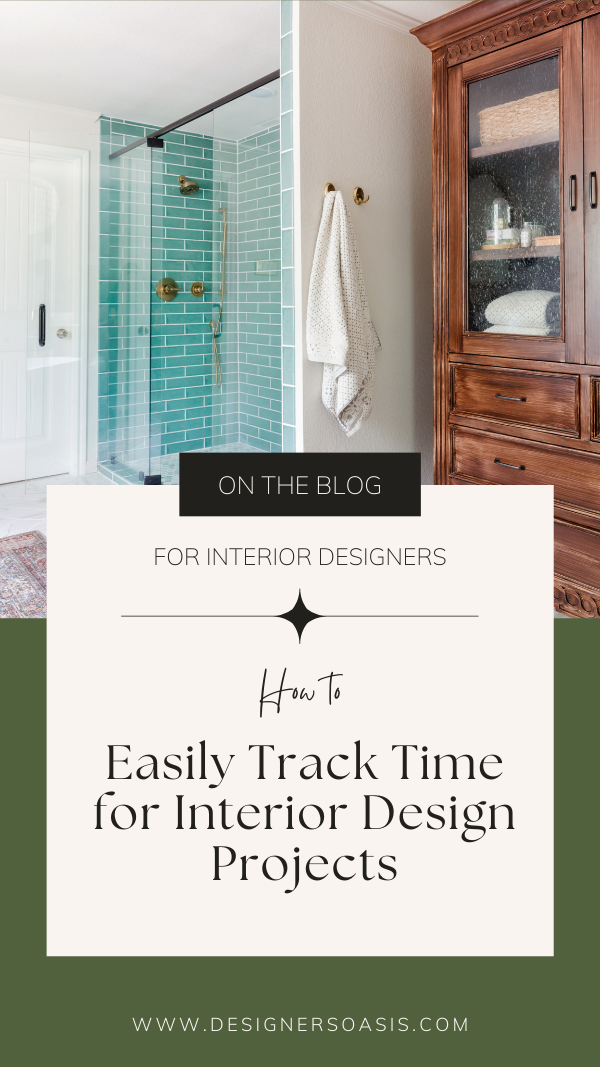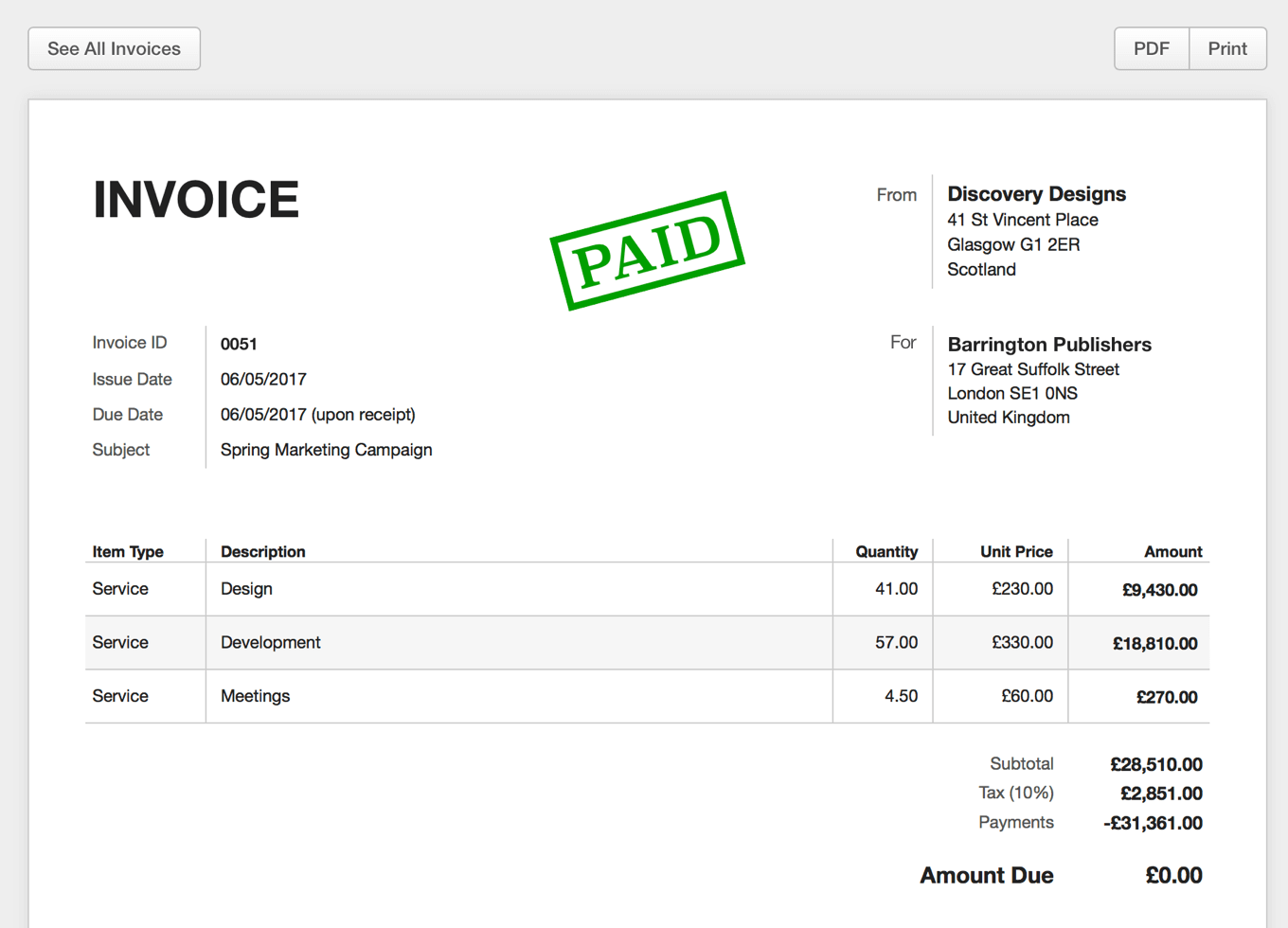How to Easily Track Time for Interior Design Projects
One of the biggest pain points interior designers struggle with is how to charge for projects. However, when I ask if they track time, I often get a glazed over look or avoiding eyes.
Most designers begrudge the idea of tracking their time. It often can feel tedious and well… time-consuming. The truth is, it doesn’t have to be (and I’ll show you how today!) AND...you don’t have to do it forever. But you 100% need to track time for several projects.
Not knowing your time is like guessing at how much money is in your bank account or how much you need to earn. Even if you’re charging a flat fee, knowing your time will help keep you profitable.
In today’s post, I’m sharing with you:
#1 Why you should be tracking your time
#2 What you should be tracking
#3 How I easily track my time using Harvest
3 Reasons Why You Should Study Your Design Time:
Know How Long Projects Take - You need to know how many hours different types of projects take you - and your team if you have one. This means you need to understand how long a living room refresh takes vs a kitchen remodel.
Charge Accurately for Your Time - Fact: Things take longer than you think. Once you track your time, you can start to create proposals that are based on reality vs what you “think” they should take.
***Side note: For me, it was at this point that I realized I needed to hire an assistant that worked at a lower hourly rate. Clients didn’t want to pay my hourly rate to schlep all over town or handle all the ordering. An assistant allowed me to charge for that time, generate additional revenue on billable hours, free up more time for me, and provide clients with proposals that didn’t give them sticker shock. Quadruple win!
Identify Areas for Efficiencies - After you have tracked time on several projects, you can start to look for areas to improve, get faster, or delegate. For example, if the client onboarding process takes 3 hours, surely you can identify a few time-saving processes to cut that down to 1-hour. Or if you just aren’t very fast at drawing, subbing out the drawing to a draftsman can save your client money and free you up to do more creative work.
What to Track
When I first started, I tracked every little task with excruciating detail. Today I’ve streamlined that task list into a few broader categories and instead, add notes to each entry with a few details.
Here is what I suggest you track for every project: (Pro-tip! Number tasks so they appear in order of the design process vs alphabetically.)
Cost of Acquisition (COA) - Time it takes to create a proposal, formalize your Agreement, answer questions, obtain payments, etc.
Client Onboarding - Creating binder, getting set up in “Systems” (i.e. Harvest, Google Drive, Dropbox, Ivy, etc.), Site Survey
Concept Design - Moodboard, initial layout, budgeting, Trade Day, emailing concept, getting comments back.
Design Development - Sourcing, Drawing, Ordering samples, specifications, Presentation prep, and delivery.
Revisions - Finalizing any re-selections, pricing, etc.
Procurement - Finalizing proposals, receiving payment, creating PO’s, purchasing, tracking, handling, receiving, delivery
Project Management - Additional site visits, meetings with contractors or trades, handling issues that arise, communicating with clients, etc.
Installation - Preparations, installation day, clean-up, etc.
Post-Occupancy - Handling deficiencies, creating a client binder, final billing, etc.
Misc. Non-Billable - Taking a client to lunch, client gifts, handling errors when we are at fault
Travel Time (50%) - Any travel one way over 30 minutes or 20 miles is billed at 50%
7 Reasons to Track Time the EASY Way with Harvest
Although there are many ways you can track your time, my favorite by far is Harvest. It outweighs the other common options for a few reasons.
1. It’s wherever you are - They offer a web-based, desktop application, and phone app to easily run a timer as you work or enter time later. I like the desktop version because I can see the little timer at the top of my screen and pause it if I take a break.
2. Make sure projects are “healthy” and profitable - You can “budget” time for each client and visually see how you are doing on time.
3. Set time-billing at the project Level - You may have some projects that are hourly and others that are a flat fee. With Harvest, you can set up the project to track time-based on how you have decided to charge for the project.
4. Easily Keep track of expenses - Printing, mileage, parking...oh my! Whether it’s billable or not, it’s all super easy to track online or using the app. You can quickly snap a photo to upload receipts using the phone app.
5. Integrates with many apps - Including my favorite Asana as well as Quickbooks. You can launch the timer or enter time from inside Asana.
6. Know where your team’s time is going - Quickly view how much your team is working and on what to prevent burnout and make sure they are doing enough billable work to pay the bills.
7. Generate invoices directly from Harvest - This is optional but you can create invoices directly from Harvest which integrates with all the major payment processors as well as Quickbooks and Xero. Another way to do this is to generate a timesheet and attach it to an invoice in Quickbooks or Ivy.
Honestly, you can track your time as simply as a pen & paper or by using an everyday spreadsheet. Just commit to tracking your time on a few projects in whatever way makes the most sense for you. For me, I can’t live without Harvest in my business.
I’ve been using Harvest for over 6 years to track time and invoice clients and I promise you it is so easy and gives you way more information that can help you understand the profitability of your projects.
Do you want to try Harvest? If you’re just getting started, Harvest is free for 1 user and up to 2 projects. If you’re ready to upgrade, it’s only $10/month when you pay annually.
Try it free for 30 days with no credit card needed. When you’re ready to go pro, here is a coupon for $10 off your first month
Hey designer. Thanks for reading. When you try something using the links we provide, we may earn a small commission at no cost to you. We only provide suggestions for products we actually use and recommend. Your support helps keep the blog going. Thank you!











